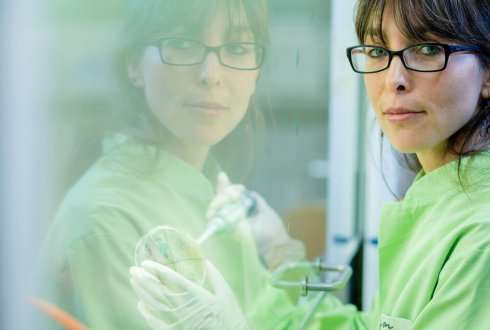Ecosystem approach makes urinary tract infection more treatable

The biological term 'ecosystem' is not usually associated with urinary tract infections, but this should change according to Wageningen scientists.
Many people suffer from urinary tract infections at some point in their life. Regarding these infections as an ecosystem may make them more treatable in the future, especially among adults. Collaborative research from IST Austria, the University of Cologne, Wageningen University & Research and IMI Birmingham published this week shows that at an older age, the source of infection for many cases of urinary tract infections should be considered as an ecosystem rather than an infection with one or more types of bacteria. In this type of ecosystem, the interactions between the different types of bacteria create stability and protect each other from external influences, such as antibiotics. This understanding is important in relation to the diagnosis and treatment of bladder infections.
Marjon de Vos, genetics scientist at Wageningen University & Research (formerly postdoc in the group of Tobias Bollenbach at IST Austria), studied over seventy bacteria samples from elderly persons diagnosed with a so-called polymicrobial urinary tract infection. In this type of infection, a number of bacterial species jointly create the problem. The older the patient, the greater the chance that the urinary tract infection consists of multiple types of bacteria.
Computer model based on measurements
De Vos investigated these infections in the lab and monitored the growth and the interactions of different bacterial species, in the presence and absence of antibiotics. Based on these measurements, Marcin Zagorski from IST Austria and Tobias Bollenbach from the University of Cologne developed a computer model which assesses the ecological stability of the infections, and the composition of infections over time and in varying conditions.
Combination of types of bacteria
De Vos: "Our results show that polymicrobial infections are different from single-microbial urinary tract infections. We may need to take this into account at the diagnosis. Although the number per type of bacteria may be too low to formally call it an urinary tract infection, the combination of the various types of bacteria can result in higher numbers of certain types. And because bacteria can protect each other from antibiotics, this may hinder treatment. The infective ecosystem perspective may however also offer a new prospect, as ecosystems can be destabilized. The addition of new (non-pathogenic) bacteria in this infective ecosystem may disrupt it, such that the clearance by the host, or antibiotic treatments, may be more effective."
Effect of antibiotics
"This study by Marjon de Vos and her colleagues highlights an entirely new aspect of the effect of antibiotics on various types of bacteria," says Christina Vandenbroucke-Grauls, head of the Medical Microbiology and Infection Prevention department at VUmc in Amsterdam. "It shows how bacteria influence each other in the presence or absence of antibiotics, and how the reaction to antibiotics in a bacterial community varies from the individual species. The findings were made in a lab but do they also apply to patients? I think it is important to consider how we can study this inpatients too."
De Vos hopes that her research results will support improved diagnoses for urinary tract infections and a more effective treatment.
More information: Marjon G. J. de Vos et al. Interaction networks, ecological stability, and collective antibiotic tolerance in polymicrobial infections, Proceedings of the National Academy of Sciences (2017). DOI: 10.1073/pnas.1713372114

















